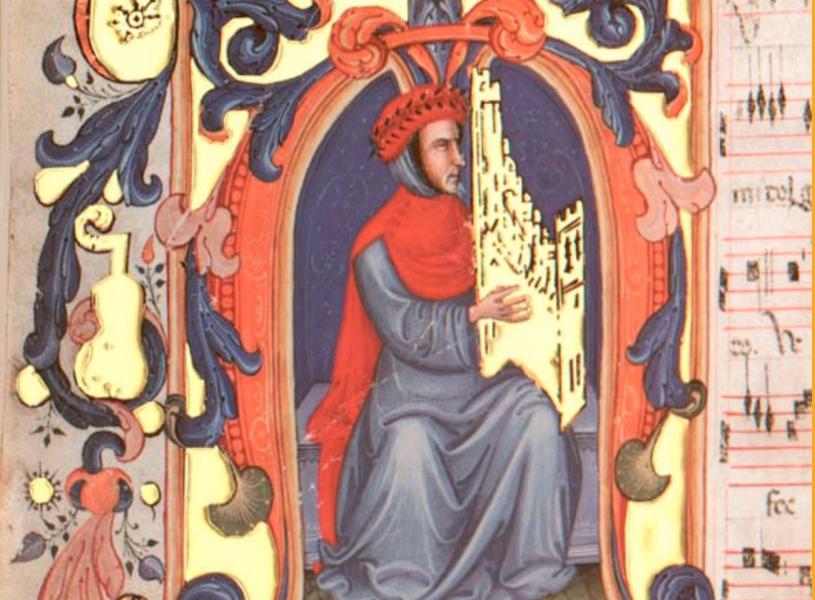- Read offline
- Access all content
- Use the in-app Map to find sites, and add custom locations (your hotel...)
- Build a list of your own favourites
- Search the contents with full-text search functionality
- ... and more!
Francesco Landini
Madrigal Man

The sweetness of his melodies was such that hearts burst from their bosoms Contemporaries of Landini, quoted in Medieval Music by Richard H. Hoppin
Born either in Florence or Fiesole, Francesco Landini (c.1335-97) contracted small pox as a child and lost his sight. As his Landini origins have been called into doubt, he is often known as Francesco di Firenze or Francesco il Cieco, 'the blind.'
But no one doubts that he was the most popular musician of his time. As a child he learned to play the lute, organ and other instruments, and began to compose music and poetry, and soon earned a reputation, notably his madrigals. He knew Petrarch and travelled to Venice, where the king of Cyprus crowned him with laurel in the 1360s.
In Florence, he was made chief organist at Santa Trínita in 1361, and at San Lorenzo from 1365, and helped build organs for the cathedral and Santissima Annunziata. He invented the syrena syrenarum, a string instrument said to be the ancestor of the Ukrainian bandura.
Landini probably wrote sacred music, but none has survived; however, 146 of his songs and verses, such as Ecco la Primavera are preserved in the Squarcialupi Codex written by the famous illuminaters in Santa Maria degli Angeli for the 15th-century cathedral organist Antonio di Bartolomeo Squarcialupi. The Codex is now in the Laurentian Library in San Lorenzo, where you can still see Landini's tomb.
Image by PD Art

